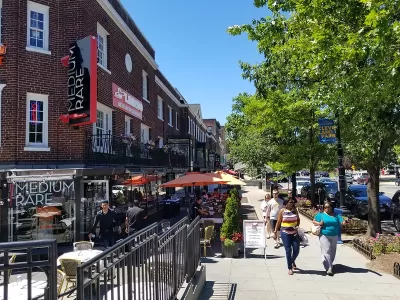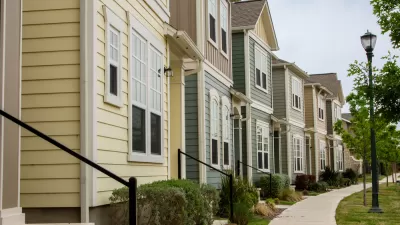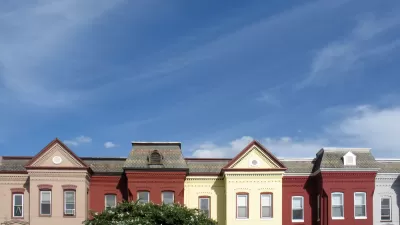How one historic district in a growing corner of Washington, D.C. is able to effect downzoning.

Nick Sementelli, Alex Baca, and Michael Whelan introduce a case study in development opposition in Washington, D.C. with the following:
When ANC 3C passed a resolution this year in support of more density along Connecticut Avenue in Cleveland Park, it was a significant moment. The neighborhood is a textbook example of a wealthy area that has preserved its exclusivity through low-density zoning, which largely makes illegal anything but single-family homes—especially on residential streets.
According to the article, the neighborhood has been growing while adding nearly no new housing, "let alone subsidized or income-restricted affordable housing."
The neighborhood is one targeted by proposed amendments to the district's Comprehensive Plan—the specific change proposed for Cleveland Park would allowed increased density with discretionary approval.
The key to this case study, however, is the additional hurdle facing potential developments in Cleveland Park.
Even after navigating the zoning process to appeal for a higher-density allowance, new projects will still have to conform to the limitations of the neighborhood’s historic district, which, in addition to its goal of preserving history, was designed specifically to limit that exact kind of density.
According to the article, the Cleveland Park Historic District has a track record of achieving downzonings for developments relative to the zoned capacity for development in the neighborhood. The example offered by the article is the Macklin, which sought to add an additional building to an existing 17-unit apartment building located two blocks from the Cleveland Park Metro station.
In the process of winning approvals, the historic district achieved three rounds of cuts from the developers original proposal for the property—for "custom zoning" (which cut 27 units from the building), a "pre-emptive concession" (which raised the number of cut units to 41), and a final cut by the district's board (for a total of 42 units cut from the project). All of this was achieved, according to the article despite the fact that "Ostensibly, historic designation in DC is supposed to have nothing to do with the land use regulations of a property." The source article includes the key details about how the building arrived to its final tally of 34 new housing units.
FULL STORY: How Cleveland Park’s historic district cost the neighborhood 42 homes in one project

Maui's Vacation Rental Debate Turns Ugly
Verbal attacks, misinformation campaigns and fistfights plague a high-stakes debate to convert thousands of vacation rentals into long-term housing.

Planetizen Federal Action Tracker
A weekly monitor of how Trump’s orders and actions are impacting planners and planning in America.

In Urban Planning, AI Prompting Could be the New Design Thinking
Creativity has long been key to great urban design. What if we see AI as our new creative partner?

King County Supportive Housing Program Offers Hope for Unhoused Residents
The county is taking a ‘Housing First’ approach that prioritizes getting people into housing, then offering wraparound supportive services.

Researchers Use AI to Get Clearer Picture of US Housing
Analysts are using artificial intelligence to supercharge their research by allowing them to comb through data faster. Though these AI tools can be error prone, they save time and housing researchers are optimistic about the future.

Making Shared Micromobility More Inclusive
Cities and shared mobility system operators can do more to include people with disabilities in planning and operations, per a new report.
Urban Design for Planners 1: Software Tools
This six-course series explores essential urban design concepts using open source software and equips planners with the tools they need to participate fully in the urban design process.
Planning for Universal Design
Learn the tools for implementing Universal Design in planning regulations.
planning NEXT
Appalachian Highlands Housing Partners
Mpact (founded as Rail~Volution)
City of Camden Redevelopment Agency
City of Astoria
City of Portland
City of Laramie





























